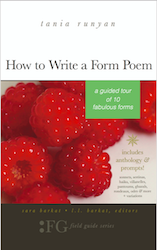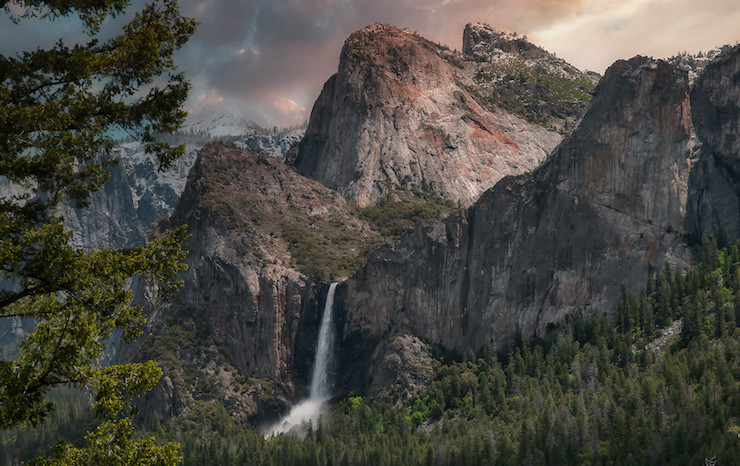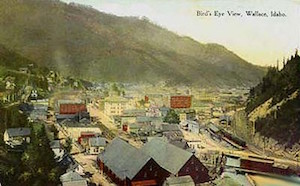Poet-a-Day: Meet David K. Wheeler
I had the pleasure of meeting poet David K. Wheeler in Chicago during the 2012 AWP Conference, where I also got my hands on his collection Contingency Plans. The book is a beautiful, soulful read that features quite a few forms—sonnet, sestina, and villanelle. It also features the pantoum “Lullaby for Sunshine Silver Mine,” a stunning poem that I am excited to include in How to Write a Form Poem.
Here are the first couple of stanzas from Wheeler’s pantoum. You can read the rest in Contingency Plans, and, of course, How to Write a Form Poem.
Lullaby for Sunshine Silver Mine (excerpt)
Close your heavy eyes a while,
just hear the caged canary sing
as the mountain pyre ambles by.
Fix your muffled ears on listening.
Just hear the caged canary sing
for all the widows weeping at home.
Fix your muffled ears on listening
for your breath sweeping against the stone…
—David K. Wheeler
Here’s what the poet has to say about his moving tribute to the miners who lost their lives.
Tania Runyan (TR): Tell me a little about the origin story of “Lullaby for Sunshine Silver Mine”:
David K. Wheeler (DKW): I grew up in northern Idaho, which is more mining country than potato country. In elementary school, we’d take field trips several towns over to tour the retired Sierra Silver Mine in historic Wallace, Idaho. The guides would walk us down one passage, take a couple turns, and then lead us out another.
It was around that time when I first heard about the Sunshine Silver Mine disaster in the same area. A fire broke out in May of 1972, and 91 miners died by carbon monoxide poisoning. That story surfaces in my mind every time I’ve been to Wallace since, compounding my sense of claustrophobia whenever I’ve toured the Sierra Silver Mine (which I’ve done more often than seems necessary), especially once the group makes that turn where entrance and exit fall from view.
TR: Why did you decide to write the poem as a pantoum? Or did the form “cause” the poem to happen?
DKW: To be honest, this poem came as the result of an assignment in a forms poetry class I once took. But yes, since I was handed the form first, the poem came as a natural progression. The repetitious, melodic nature of the pantoum felt like it was best suited for a kind of lullaby—those soft, circuitous songs intended for children’s bedtimes that sound oddly foreboding when one stops to pay attention: babies in treetops crashing through broken boughs back to earth, and all that. Carbon monoxide poisoning seemed all too fitting.
TR: What do you hope poets can learn from a book like How to Write a Form Poem?
DKW: I hope poets will learn that forms aren’t archaic constraints to try to squeeze modern ideas into; they’re vehicles that can enhance the mood or story a poem is conjuring if paired well. A highly repetitive form like the pantoum isn’t going to work well for linear storytelling, but it can absolutely capture the essence of listless drifting or, as in my case, morbid fixation.
About David K. Wheeler
David K. Wheeler is the author of Contingency Plans: Poems, published by T.S. Poetry Press. He has written for The Seattle Times, Catapult, The Stranger, The Morning News, and others. He earned his BA in Creative Writing from Western Washington University and is now associate editor for Shelf Awareness in Seattle.
Featured photo by G. Yancy. Wallace, Idaho post card photo by Ruslan, Creative Commons, via Flickr. Post by Tania Runyan.
Browse more Poet-a-Day
Browse 50 States of Generosity
Check out The Yellow Wall-paper Graphic Novel
______________
How to Write a Form Poem: A Guided Tour of 10 Fabulous Forms

You’ll also be entertained by Runyan’s own travel stories that she uses to explain and explore the various forms—the effect of which is to bring form poetry down to earth (and onto your own poetry writing map)!
BUY HOW TO WRITE A FORM POEM NOW!
- Flowers of California: California Poppy - December 8, 2022
- Flowers of California: Lily of the Nile - October 13, 2022
- Flowers of California: Crape Myrtle - October 5, 2022



Bethany Rohde says
Pantoum is my favorite of the forms (so far). Whirling-yet-approachable.
Thanks for this interview. Absolutely love David K. Wheeler’s phrase, “breath sweeping against the stone.” I feel it, I hear it. (And fun to learn we share the same alma mater.)
My copy of How to Write a Form Poem is supposed to arrive in my mailbox today—I wonder if Pantoum will stay my favorite. Looking forward to new discoveries.
Tania Runyan says
Pantoums. Are. Insane. And amazing. Oceans, incantations. I look forward to hearing about your experience with forming or reinforcing favorite forms!
Sandra Heska King says
Oh my. I just read the whole of David’s poem. (My book came today.) It’s lilting, yet heartbreaking, and I will probably think of it now any time I’m in an enclosed space. That canary…
I also just read your Opening Map. “Most of all, my hope is that by working through these pages, you’ll discover that forms are not formulas., but rather colorful maps to the unexpected . . .” This promises to be a fun and informative journey.
Tania Runyan says
I hope you love your vacation with forms, Sandra! And yes, David’s poetry is scrumptious.